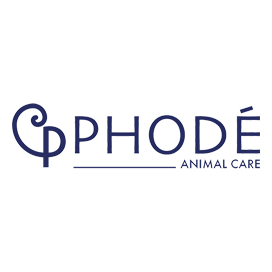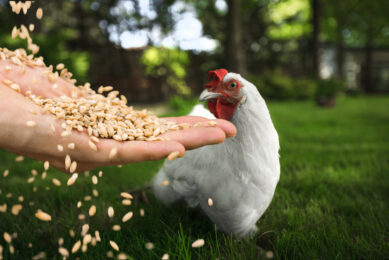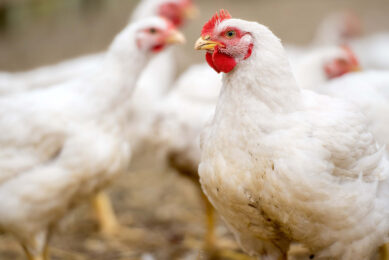Social regrouping is not an insignificant event for dairy cows
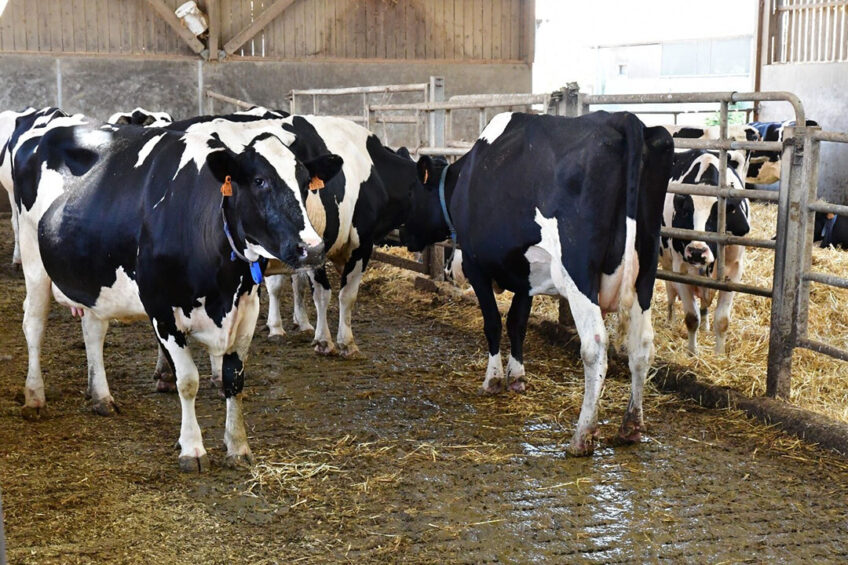
With dairy cows, it is important to control production by focusing on a number of factors: nutrition, the environment, sanitary issues and behaviour. Yet the management of the dairy herds can lower the performance of the animals compared to their potential.
Dairy cow routine involves several relocations per single lactation
A dairy cow in a commercial farm is frequently moved to make groups similar in age, stage of lactation, milk production or reproductive status. Those regroupings can occur up to 4 to 5 times during one lactation.
As a social animal, a certain order is established within a group of dairy cows familiar to each other. Thus, mixing a cow with unfamiliar peers will destabilise the social dynamic resulting in more numerous physical social interactions and competition.
Productive behaviours like lying, feeding, and rumination are negatively altered leading to a decrease of dry matter intake and milk production.
Studies have shown the loss of milk the day after regrouping and the greater effect on primiparous cows compared to multiparous cows.
How to overcome loss of milk production after regrouping?
Adaptations of the farm management may help to reduce the negative impacts of relocation.
First a lower stocking density may mitigate the competitive behaviour and the reduction of lying time. Perpetual modifications of social relationships within the herd and high density impact negatively resting time. Yet resting time is essential for the dairy cow. As a consequence, she will seek this rest time itself, even if it means cutting down feed time. Milk production is penalised de facto by a reduction in the dry matter ingested every day, as well as by excessive quantities ingested at less frequent feeding times. In addition, a decrease in lying down reduces the blood flow diffusion through the udder. Rumination efficiency decrease as lameness risk increases.
Secondly introducing cows as pairs vs. individually revealed to be a successful management to avoid a milk production drop after regrouping. Faecal cortisol metabolite level in primiparous cows was shown to be lower when moved along with a partner after calving. The concentration was also observed higher in primiparous cows than multiparous cows suggesting a greater sensitiveness of first-lactation heifers to the negative effects of a social regrouping event.
This leads to the description of naïve versus experienced cows. Indeed, multiparous cows may be more experienced and familiar with the social stress associated with regrouping events and, thus, experience less negative effects after regrouping as compared to primiparous cows who would be more naïve to such events.
Another opportunity to reduce the negative impacts of regrouping: the use of sensory feed additives.
Olfaction can positively influence animals’ perception of their environment. Research aims to identify and better understand the effects of qualified functional sensory molecules and plant extracts on physiology, behaviour, better-being and finally on the performance of living beings. Some active molecules decrease the brain’s perception of stress and stimulate the reward pathway, thereby favouring the best possible response by the animal to perceived stress. Various stress situations are encountered in livestock production environments: heat, density, handling, regrouping or response to vaccinations among others can be mentioned.
A recent study in dairy cows showed the benefits of a sensory solution after a social regrouping event.
32 mid-lactation dairy cows were involved in a research study to evaluate the effect of feeding a sensory functional feed additive (VeO, Phodé) to reduce the negative impact of social regrouping of lactating dairy cows on behaviour and milk production. The cows, including primiparous and multiparous, were individually moved along to a group of unfamiliar cows.
One week before regrouping, they received one of the 2 treatments:
Control total mixed ration or
Control total mixed ration with a sensory functional feed additive.
Their behaviours and milk production were recorded the week following the social event and compared to their baseline (parameters before relocation).
Primiparous cows that were fed the sensory feed additive ate 89 minutes longer the day after regrouping compared to Control cows (P<0.05). No drop in lying time and rumination time was observed (Figure 1; Figure 2). Moreover, rumination time was improved the second and the third days after regrouping (Figure 2).
Figure 1 – Time spent lying down in primiparous cows fed sensory feed additive.
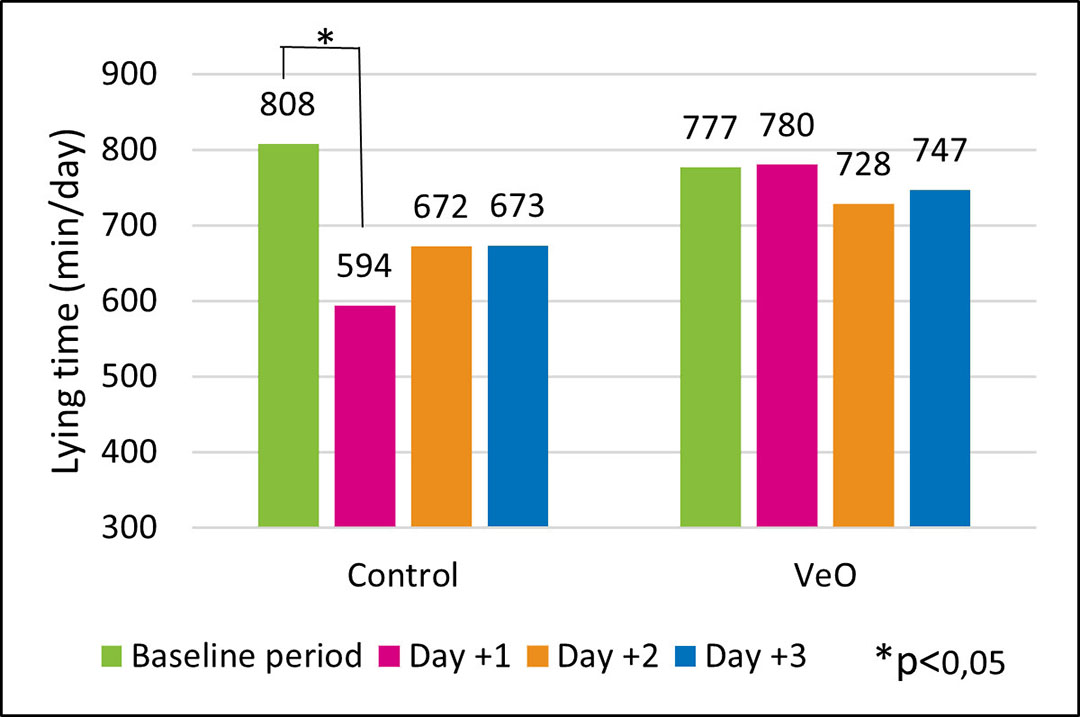
Figure 2 – Time spent ruminating in primiparous cows fed sensory feed additive.
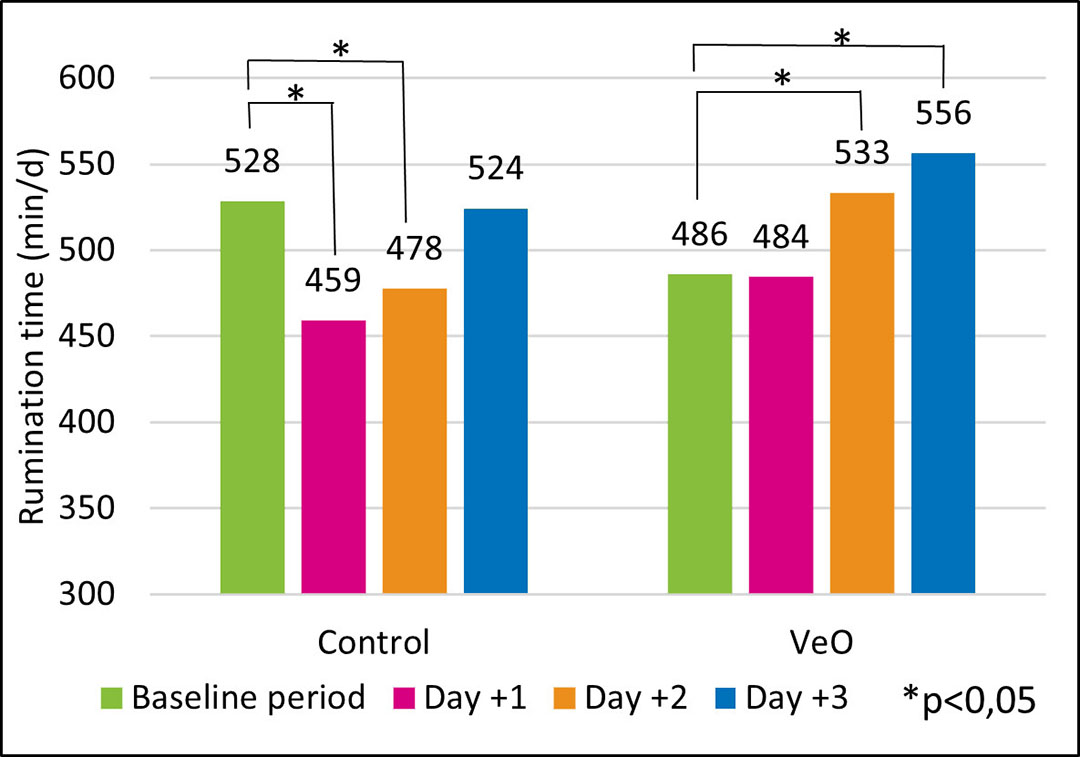
Cows fed with the sensory feed additive in their total mixed ration were able to express their most important behaviours. In addition, primiparous cows initiated fewer total competitive interactions.
across the 7 days following regrouping. Last but not least, feed efficiency was improved with the sensory additive in a greater extent for primiparous cows (Figure 3).
Figure 3 – Feed efficiency of dairy cows fed sensory feed additive.
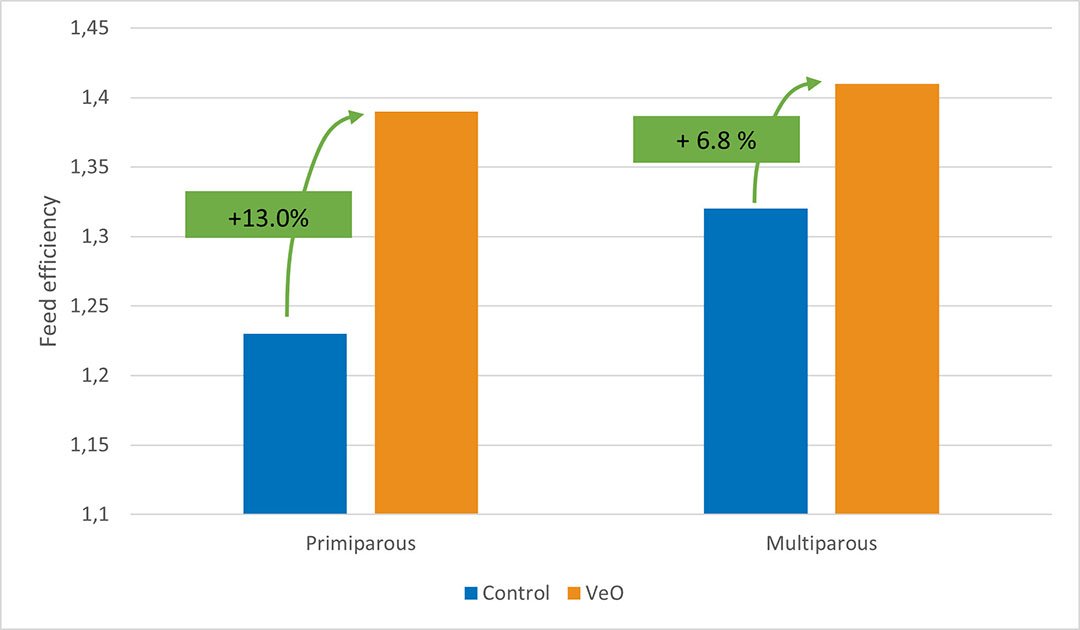
A few grams of a sensory feed additive make the difference
Besides farm management, adding a few grams of a specified sensory feed additive is able to mitigate the negative effect of regrouping on behaviour and milk production. Dozens of kilograms of milk are consequently spared compared to control cows. As previously observed in different studies, the effect is greater in naïve cows, the primiparous cows in the present study. Nevertheless, the multiparous cows in commercial farms are highly likely to be less experienced than those in a research station and deserve the same treatment. A few grams can make all the difference.
References on demand


